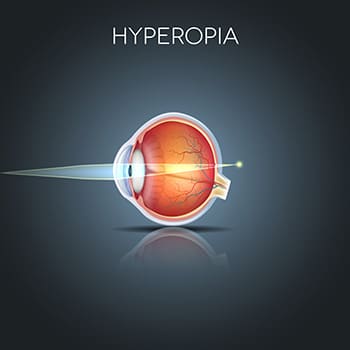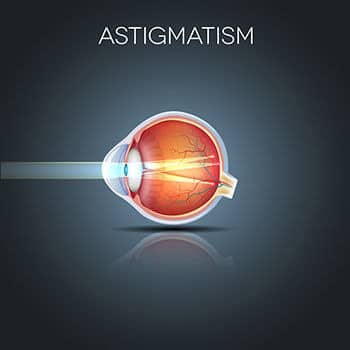Just a few minutes in our LASIK suite can result in years of visual freedom from glasses and contacts to enjoy life-changing things such as:
Some LASIK centers only offer general purpose, non-tailored, one-procedure-fits-all LASIK. Not at Carolinas Centers for Sight, P.C. Every LASIK patient receives custom, blade-free LASIK to address their unique vision characteristics. The result is better end result vision.

If your cornea is not shaped in a way that allows light to properly focus on the retina (called a refractive error), you will have blurry vision. LASIK, or the LASIK alternative called PRK, can be performed to correct the corneal shape, allowing light to properly focus and ultimately providing clear vision.
Both LASIK and PRK procedures use excimer lasers to reshape the corneal tissue. These are “cool” lasers that generate ultraviolet range power to remove microscopic layers of tissue – approximately 1/10 the width of a human hair. The laser is programmed to remove precisely the amount of tissue needed to achieve the desired visual result for your unique refractive error: nearsightedness, farsightedness or astigmatism.
At Carolinas Centers for Sight, P.C. in Florence the Wavefront Optimized Allegretto Wave® Eye-Q laser is used for LASIK and PRK. Precise laser energy pulses are applied on the periphery of the cornea in order to maintain the cornea’s natural shape while also respecting the cornea’s thickness and curvature. This can reduce the risk of halos, glare and nighttime visual disturbances after treatment. Best of all, the vision results using this technology are superb for most patients.
To be a good candidate for our LASIK technology, you must have the correct corneal thickness and eye health to support the procedure. That’s exactly why we have every LASIK patient undergo an extensive LASIK Consultation, to ensure a highly effective and accurate procedure.

Nearsighted individuals typically have problems seeing well at a distance and are forced to wear glasses or contact lenses. The nearsighted eye is usually longer than a normal eye and its cornea may also be steeper. Therefore, when light passes through the cornea and lens, it is focused in front of the retina. This will make distant images appear blurred. LASIK and PRK are both solutions for Myopia.

Farsighted individuals typically develop problems reading up close before the age of 40. The farsighted eye is usually slightly shorter than a normal eye and may have a flatter cornea. Thus, the light of distant objects focuses behind the retina unless the natural lens can compensate fully. Near objects require even greater focusing power to be seen clearly and therefore blur more easily. LASIK or PRK monovision, refractive lens exchange (RLE) and cataract surgery with the insertion of a multifocal lens are all solutions for Hyperopia.

Asymmetric steepening of the cornea causes light to be focused unevenly, the main optical problem in astigmatism. To individuals with uncorrected astigmatism, images may look blurry or shadowed. Astigmatism can accompany any form of refractive error and is very common. Solutions for astigmatism are LASIK, PRK, corneal relaxing incisions and Toric lens implants.

Presbyopia is a condition that typically becomes noticeable for most people around age 40 to 45. In children and young adults, the lens inside the eye can easily focus on distant and near objects. With age, the lens loses its ability to change focus adequately.
The lens inside the eye and its supporting structures lose the ability to make the lens longer during close vision effort. To compensate, affected individuals usually find that holding reading material further away makes the image clearer. Ultimately, aids such as reading glasses or bifocals are typically needed by the mid-40s. Surgical solutions for presbyopia include monovision LASIK or PRK, cataract or refractive lens exchange with a multi-focal IOL implant.
Not a LASIK candidate? Explore the EVO ICL. It is a soft lens, like a contact lens, that is surgically placed into the eye. The lens works similarly to LASIK and PRK in that it permanently corrects your vision. Unlike these procedures, however, it doesn’t require cutting or reshaping of the corneal tissue and it is removable.
Good candidates for this procedure are people ages 21 to 45 who are nearsighted and have had stable vision for a year. The ICL is made to help correct patients with low myopia (‑3 diopters) to high myopia (‑20 diopters). It can be a preferred option for people with severe dry eyes or thin corneas.
FDA-approved, ICLs have been available for 10 years. To date, more than 500,000 ICLs have been implanted in patients worldwide, with excellent visual outcomes. The patient satisfaction rate to date is 99%.1
The EVO ICL is an advanced soft-material lens, composed of 100% biocompatible collagen copolymer. It provides permanent vision correction that is sharp and vivid. There is no maintenance associated with the lens, and it is intended to remain in place as long as you are satisfied with your vision. If at any point your vision changes or you wish to have them removed, this can be done easily. Because the cornea is in its natural state, you can pursue other vision correction options.
In short, the advantages of ICLs include:
The ICL procedure is an outpatient procedure is typically painless (and typically takes less than 20-30 minutes). Prior to the procedure, the patient receives topical anesthesia drops to minimize discomfort. Then the eye surgeon creates a very small opening to insert the lens into the eye with an injector. Once the lens is injected, it unfolds in the eye and the procedure is complete. Patients typically experience minimal discomfort and return to work the next day. You can experience improved vision right away and a quick recovery time.
The risks of implantable contact lenses are similar to those of other refractive procedures like LASIK and PRK. However, ICLs do not have the complications associated with physically changing the shape of the eye. In addition, if any complications should occur, ICLs are removable. Complications related to ICLs include infection, increased intraocular pressure, and the possibility of accidental damage to the crystalline lens during the procedure. In most cases, these complications can be corrected by the eye surgeon. Before considering ICL surgery you should have a complete eye examination and talk with your eye care professional about EVO ICL surgery, especially the potential benefits, risks, and complications.
At Carolinas Centers For Sight, we always recommend that you have a vision consultation to determine your best vision correction plan. If ICLs are not a good option for you, we can consider other options.
Patients who have undergone any ophthalmic surgery or who have a history of eye diseases such as iritis, glaucoma, or diabetic retinopathy are not considered good candidates for ICLs. In addition, ICLs may not be the best course of action for patients:
The first step to find out if you need LASIK surgery is a comprehensive eye exam with one of our Board Certified Ophthalmologists at Carolinas Center for Sight.